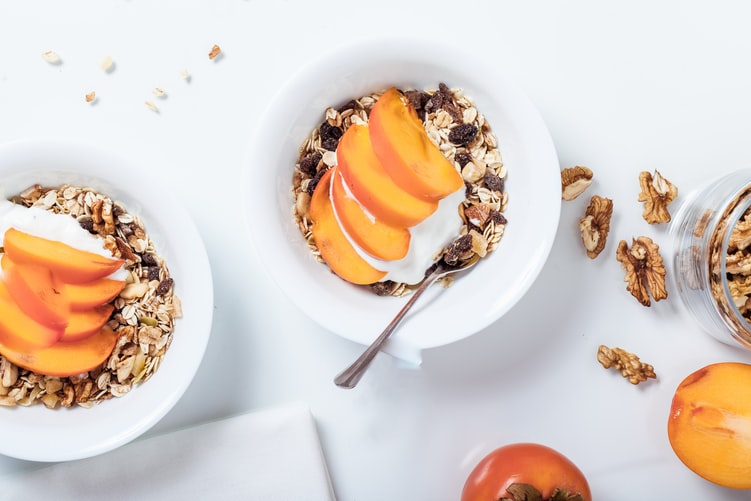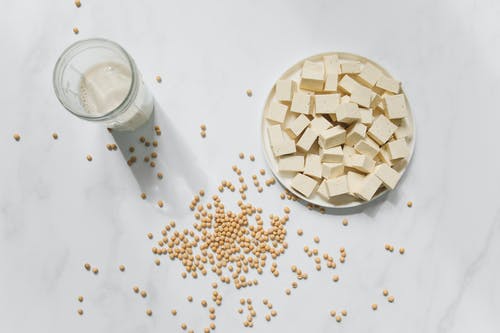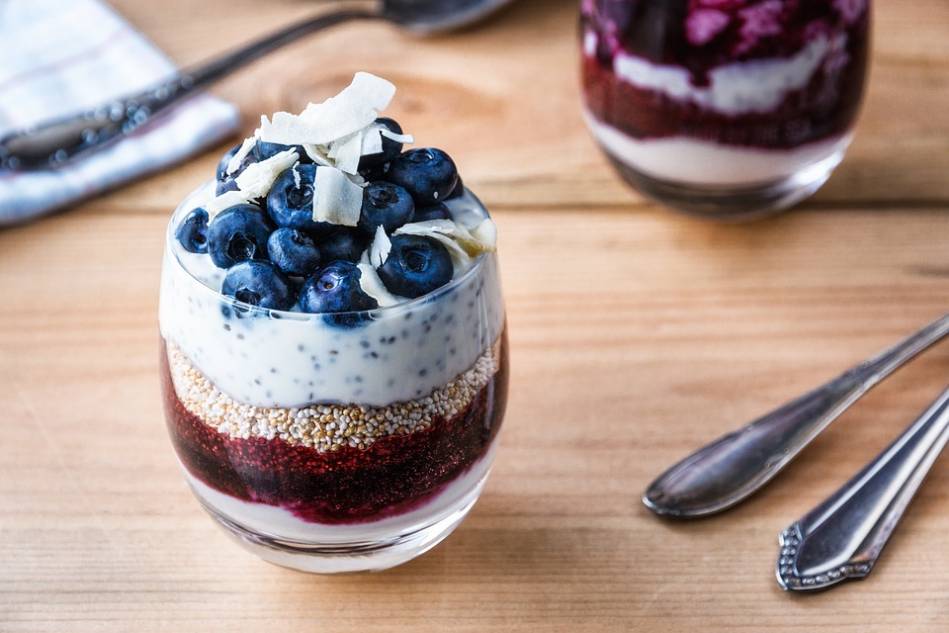
5 high-protein vegan recipes for athletes
 People started assuming vegan diets were just a trend, but now it is a lifestyle followed by many, including high performance athletes. Veganism has proven many health benefits that include promoting weight-loss, reducing the risk of heart diseases, lowering cholesterol levels, preventing certain types of cancer and even supporting the control diabetes. In this article we help you build up your diet with great and easy high-protein vegan recipes.
People started assuming vegan diets were just a trend, but now it is a lifestyle followed by many, including high performance athletes. Veganism has proven many health benefits that include promoting weight-loss, reducing the risk of heart diseases, lowering cholesterol levels, preventing certain types of cancer and even supporting the control diabetes. In this article we help you build up your diet with great and easy high-protein vegan recipes.
Protein for vegan athletes
Protein intake is the never-ending concern for people in the fitness industry, who are constantly trying to keep up with their bodies’ nutritional needs to be able to grow and recover after the intense workouts. Some even dare to consume kilos of chicken or meat day after day, aiming to hit their intake targets, but most people often forget that there is an array of protein sources that come from plants, providing just as much support to everyone’s diet as meat.
Plants are a powerful ingredient to include in your meals. Not only they can contain macronutrients (protein, fats and carbohydrates), but they also contain essential vitamins and minerals. For example, if we look at the greens we find that broccoli contains more protein per calorie than steak, as well as vitamin C and zinc; while kale and spinach are even higher in protein per 100g.
A vegan diet can improve your fitness as it can help you lose excess weight, build muscle and improve your stamina. Let’s remember that proteins are amino acids that are essential for many body functions, including muscle development and recovery. Protein helps build and recover the muscle fibers that break down during heavy workouts, causing growth as consequence, preparing the muscle to carry heavier loads.

The best sources of vegan protein
People who decide to avoid meat and/or food from animal origin, or those who are suffering from food allergy or intolerances to certain foods, can still provide proteins necessary for the human body from plant-based sources.
Soy products
-
Miso: A soy paste, used in Japanese cuisine.
-
Soymilk: Soaked, finely ground and filtered soybeans produce a liquid called soy milk. It is an excellent source of high quality protein and B vitamins.
-
Soy nuts: Roasted soy nuts are whole soybeans that have been soaked in water and then baked in the oven until golden brown. They are rich in protein and isoflavones.
-
Soy sauce: Soy sauce is a dark brown liquid made from soybeans that have undergone a fermentation process (different types exist).
-
Tempeh: Tempeh is a tender, thick soy product. Whole soybeans, mixed with rice or millet, are fermented and pressed, to obtain a solid with a smoky or nutty flavor.
-
Textured soy protein: Textured soy protein is made from textured soy flour, soy protein concentrates and spun soy fiber. It contains 70% protein and retains most dietary fiber. Hydrated, it has a chewy texture and is used as a meat replacement.
-
Tofu: Tofu or soybean curd is a soft, smooth product made by curdling fresh, hot soymilk with a coagulant. Tofu is rich in high quality protein and B vitamins, and low in sodium.
-
Whole soybeans: Whole soybeans are an excellent source of protein and dietary fiber.
Vegetables
-
Lentils: They provide 25 g of protein per 100 grams, are rich in vegetable proteins, fibers, antioxidants and minerals.
-
Beans: They provide 9 g of protein per 100 grams, and are rich in fiber, iron, phosphorus and antioxidants.
-
Peas: They provide 5 g of protein per 100 grams, fibers, vitamins and minerals (zinc, copper, fluorine).
-
Broccoli: They provide 3 g of protein per 100 grams, very rich in vitamins A, B, C and E and packed with antioxidants and trace elements.
-
Artichoke: They provide 3 g of protein per 100 grams, which is very rich in fiber, antioxidants and vitamins.
-
Potatoes: It provides about 2 g of protein per 100 g, in addition to potassium and vitamin C.
Nuts and seeds
-
Chickpeas: Cooked chickpeas are high in protein, containing about 7.25g per ½ cup.
-
Peanuts: Peanuts are high in protein, healthy fats, and can improve heart health. They contain about 20.5g of protein per ½ cup.
-
Almonds: Almonds provide 16.5g of protein per ½ cup. They also provide a good amount of vitamin E, which is great for the skin and eyes.
-
Spirulina: Spirulina is a blue or green algae that contains around 8g of protein per 2 tablespoons. It is rich in nutrients – iron, B vitamins – but not B-12 – and manganese.
-
Quinoa: Quinoa is a grain high in complete protein. Cooked quinoa contains 8g of protein per cup. It is rich in magnesium, iron, fiber and manganese.
-
Chia seeds: Chia and hemp seeds are complete sources of protein (2g of protein per tablespoon), rich in fiber and omega-3 fatty acids.
-
Hemp seeds: Much like chia seeds, hemp seeds provide complete protein. Hemp seeds provide 5g of protein per tablespoon.
Vegan food supplements
-
Vegan Protein: This protein from BioTechUSA, consisting of rice, peas, quinoa flour, acai berry powder and goji powder, is perfect for providing all the necessary amino acids as well as vitamins and minerals.
-
Peanut butter: Produced by BioTechUSA, containing exclusively peanuts, without palm oil or added sugar, it provides 28 grams of protein per 100 grams.
-
Amino acid supplements for vegans: Finally, it is possible to opt for food supplements providing amino acids in order to balance food intake. At BioTechUSA you can try Glutamine Zero, BCAA Zero or even BCAA + Glutamine Zero).

5 delicious high-protein vegan recipes
Vegan ‘meatballs” (4 servings, about 16 balls)
Ingredients:
-
2 tbsp. linseed flour
-
½ cup of water
-
280 g mushrooms, chopped
-
250 g tempeh
-
¼ cup of onions
-
¼ cup of crushed walnuts
-
1 tbsp. Italian spice to taste (oregano, basil, tarragon, etc.)
-
1 tbsp. granulated garlic
-
½ tsp. Himalayan salt
-
¼ tsp. pepper
-
2 tbsp. fresh parsley
-
¼ cup seitan
-
¼ cup of gluten-free, vegan breadcrumbs or oatmeal
Preparation:
-
Mix the linseed flour with water and let stand for 5 minutes. Meanwhile, preheat the oven to 180 ° and line a baking sheet with baking paper.
-
Put the mushrooms, tempeh, nuts, onions, Italian spices, garlic granules, salt and pepper in a blender and mix until you get a homogeneous consistency.
-
Add the set-aside flaxseed flour, seitan and breadcrumbs to the mixture and blend together again. You need to get a sticky, dough-like texture. From this, form balls and then place them on the baking tray.
-
Bake them until golden brown, 20-25 minutes.
-
Let chill for 5 minutes and you can already eat it. You can make tomato sauce or eat with vegetables, but it’s even good on its own!
Protein-rich vegan mac & cheese (6 servings)
Ingredients:
-
200 g of vegan dry pasta to taste (e.g. red lentil or chickpea pasta)
-
1 cup of soy or other vegetable milk to taste
-
40 g brewer’s yeast flakes
-
32 g tahini
-
2-3 tsp. onion powder
-
2 tsp. granulated garlic
-
100 g raw or steamed green peas (optional)
-
40 g raw or steamed beets (optional)
Preparation:
-
Prepare the pasta as described on the package.
-
In a larger bowl, mix the ingredients of the “cheese sauce” thoroughly: vegetable milk, brewer’s yeast flakes, tahini, onion powder, and granulated garlic. You can even add salt to taste.
-
Roll the sauce over the cooked dough and add the optional ingredients, green peas and diced beets if you’d like.
-
The longer you let it stand, the stickier the sauce will be.
Lentil-spinach curry with coconut jasmine rice (4 servings)
Ingredients:
-
2 cups of jasmine rice
-
1 cup of coconut cream
-
Water
-
1 pinch of salt
-
1 tsp. ground ginger (optional)
-
¼. tsp. paprika flakes (optional)
-
1 ½ cups of green lentils
-
2 tsp. olive oil
-
½ onion head
-
1 tsp. cumin
-
3 garlic cloves
-
4 tsp. garam masala spice mix
-
½ tsp. salt
-
½ lime
-
1 cup of chopped tomatoes (canned)
-
1 tsp. coconut or brown sugar
-
About 200-250 g of spinach
-
½ cup of vegetable milk
Preparation:
-
Cook the rice with the coconut cream and water. Replace 1 mug of water with coconut cream.
-
Put the lentils in a pan and add enough water to cover them. Wait until water is boiling, then cook for approx. 15 minutes. Filter the finished lentils and set them aside.
-
Put the olive oil in a pan, then add the chopped onion and fry until caramelized, approx. in 5 minutes. Add the cumin seeds, garlic, ginger, paprika flakes and garam masala spice mixture, then whisk together and cook for approx. 1 minute.
-
Add salt, lime juice, tomatoes and sugar, then cook on low heat for another 10 minutes until tomatoes fall apart. Meanwhile, in a blender, crush the spinach with the vegetable milk, but it does not have to be completely homogeneous, just a puree consistency.
-
When the tomato sauce is done, add the finished lentils and spinach mixture and mix them thoroughly. Cook over medium heat for another 7-10 minutes, seasoning with salt, pepper and lime to taste.
-
Serve with coconut rice.
Zucchini-beet pasta with peanut sauce (2 servings)
Ingredients:
-
2 zucchini
-
2 larger beets
-
1 tsp. onion powder
-
1 tsp. ground ginger
-
2 cloves garlic
-
Olive oil to taste
-
3 tbsp. peanut Butter
-
2 tbsp. soy sauce
-
1 tbsp. sesame oil
-
½ tsp. chili flakes
-
1 tbsp. agave syrup
-
1 lime
-
Sesame seeds for decoration (optional)
Preparation:
-
Peel the zucchini and beets and cut them into thin strips using a vegetable peeler.
-
For the peanut sauce, mix the peanut butter, soy sauce, sesame oil, chili flakes and agave syrup in a small bowl.
-
Heat a pan, then add the olive oil, garlic, onion powder and ginger. Cook them on low heat for 1-2 minutes.
-
Add the vegetable strips and the nut sauce, then fry them, stirring constantly for approx. In 3-5 minutes. Serve sprinkled with sesame seeds and hazelnuts.
BBQ couscous with tofu (2 servings)
Ingredients:
-
2/3 cups of water
-
½ tsp. curry powder
-
Salt to taste
-
The juice of 1 lime
-
½ cup of couscous
-
1.5 tsp. colza oil
-
½ head or 1 small broccoli
-
150 g of tofu
-
BioTechUSA’s Zero Sauce, BBQ flavor.
Preparation:
-
Warm up the water, add half the curry powder, salt and lime juice, then when the water has boiled, remove from the heat, add the couscous and cover for a few minutes.
-
Heat a ½ teaspoon of colza oil in a pan while you wash the broccoli and take it apart into small florets, and then put them in the pan. Put a lid on it and simmer until soft in a few minutes.
-
Stir in the couscous and add the finished broccoli.
-
Cut the tofu into cubes or small triangles. Heat 1 teaspoon of colza oil in a pan, then add the other half of the curry powder and salt. Fry the tofu slices in this spicy oil, fry them on each side for 5-5 minutes.
-
Once the tofu is done, serve with broccoli and couscous and sprinkle with Zero Sauce BBQ.